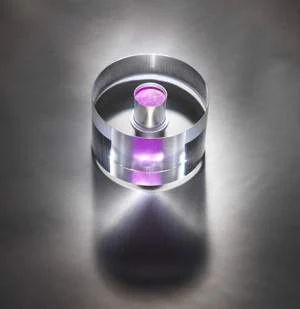A group of scientists have found a way to produce a solid-state maser that operates at room temperature.
Now to answer the first question that you’re probably thinking – what in the world is a maser?

It’s actually not that complicated. It is similar to a laser, but instead of using light to emit the signal it uses microwaves. This kind of technology has become increasingly important at NASA and other enterprises that operate in space.
Masers are used in that context to help boost radio signals. For example, the Curiosity rover currently exploring Mars uses maser technology to ensure its signals can be sent through space and in turn back to Earth.
The problem, though, is that until now, masers required enormous cooling equipment to keep them from overheating, something that obviously would cause a huge problem for vehicles and other items millions of miles away.
But there is hope for much more scalable masers, thanks to a new report published in the science journal Nature.
The room-temperature maser at the UK’s National Physical Laboratory was achieved after scientists altered the chemical components of a crystal and then used microwaves to restore them to normal. They realized that doing so also let off a stream of identical microwaves, reducing the strain and heat required for the process.
Ultimately, researchers suggest that room-temperature MASERs could be used to make more sensitive medical instruments for scanning patients, improved chemical sensors for remotely detecting explosives; lower-noise read-out mechanisms for quantum computers and better radio telescopes for potentially detecting life on other planets.
“For half a century the MASER has been the forgotten, inconvenient cousin of the LASER. Our design breakthrough will enable MASERs to be used by industry and consumers,” said the researchers.
“When LASERs were invented no one quite knew exactly how they would be used, and yet the technology flourished to the point that LASERs have now become ubiquitous in our everyday lives. We’ve still got a long way to go before the MASER reaches that level, but our breakthrough does mean that this technology can literally come out of the cold and start becoming more useful.”






